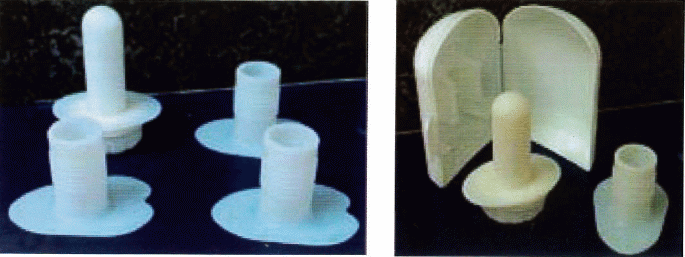Female Urinary
Incontinence
Article contributed by:
Dr Siow Woei Yun,
Specialist, Urology,
Raffles Hospital
for New Dimension -
biannual newsletter of
the
Society for Continence,
Singapore
(Articles extracted from
Chapter 5 of Female
Urinary and Pelvic
Diseases: Essential
Knowledge)
Urinary incontinence
refers to the
involuntary leak of
urine. It affects
approximately 30-40% of
women worldwide. The
commonest causes of
urine leak include
stress urinary
incontinence, urge
urinary incontinence and
mixed urinary
incontinence. At
present, the help
seeking rate for women
with urinary
incontinence is less
than 50%. This is
attributed to many
common misconceptions.
These misconceptions
include:
|
►
|
|
Acceptance as part
of ageing
|
|
|
► |
|
Belief that symptoms
mild/self-limited
|
|
|
► |
|
|
► |
|
Ignorance regarding
sources of help
|
|
|
►
|
|
Low expectations for
treatment
|
|
|
► |
|
Fear of invasive
procedures
|
|
However, urinary
incontinence is not
merely a medical
problem. It is also a
social problem because
people close to the
affected individual may
not comment on the urine
leakage but they will
certainly smell the
evidence. Thus, urinary
incontinence is a
problem that must be
addressed and solved.
Stress urinary
incontinence refers to
urine loss upon
straining e.g. coughing,
sneezing, laughing,
carrying heavy loads,
skipping, jumping, brisk
walking, and sometimes
even standing. This
occurs when the pelvic
floor is too weak to
keep the urethra closed
under situations of
stress/exertion thus
resulting in urinary
incontinence. Risk
factors for this problem
include pregnancy,
childbirth, ageing,
menopause, manual labour,
obesity and repetitive
strain e.g. chronic
cough, affects chronic
constipation and high
impact sports.
Treatment of stress
urinary incontinence
begins with a course of
pelvic floor exercise
for a minimal duration
of one month. The author
routinely instructs her
patients on the proper
technique for pelvic
floor muscle training
during the clinic
consultation. For
patients who have
difficulty grasping the
proper technique for
pelvic floor muscle
training, enhanced
training using Vibrance
device is undertaken.
The Vibrance device is a
3-in-1 vaginal cone
device with the
following features:
|
1)
|
|
Biofeedback via
vibration when a
properly performed
pelvic floor
contraction squeezes
the device with
adequate intensity.
|
|
|
2) |
|
Progressive strength
training through the
addition of a
“resistance sheath”
to the device.
Three different
resistant sheaths
are provided. With
the resistance
sheath in place, a
stronger pelvic
floor contraction is
needed to cause the
device to vibrate.
|
|
|
3) |
|
Provision of a
training regimen.
When the auditory
signal is heard, the
patient contracts
the pelvic floor
muscles. When
the auditory signal
ceases, the patient
relaxes the pelvic
floor muscles.
|
|
|
 |
Illustration 1
Vibrance vaginal
cone device to
enhance
pelvic floor
muscle training
Photos courtesy
of
Society for
Continence
(Singapore) |
Non-surgical treatment
e.g. pelvic floor
exercise, may improve
the symptoms by 30-60%,
but cure is rare.
Surgery is the main
curative option for
stress urinary
incontinence with 85-95%
cure rate. Surgical
approach and results
have improved over the
past half-century. In
the past, surgery
required a long incision
similar to that for a
Cesarean section i.e.
Burch colposuspension. This evolved to become
three smaller incisions,
one in the vagina and
two over the lower
abdomen i.e.
tension-free vagina tape
(TVT tape) insertion. Today, we are able to
achieve equivalent
results with a single
vagina incision and no
skin incisions i.e. scarless transvaginal
surgery for Miniarc tape
insertion. With this
improved surgical
method, surgical
complications e.g.
bleeding, bladder
injury, bowel injury,
urinary retention,
overactive bladder are
reduced or even removed.
The length of tape that
is inserted is halved
with the new Miniarc
tape. This reduces the
risk of non-healing,
infection and tape
erosion. Most cases of Miniarc tape insertion
can even be performed as
a day case, with no need
for hospitalisation.
|
The author has the
longest experience with
the Miniarc surgery
within the South East
Asia region. The
author’s experience with
the Miniarc surgery has
been highly
satisfactory. The
subjective improvement
rate is 100%, while the
subjective cure rate is
95%. Patients who are
undergoing surgery for
the first time achieve
particularly good
results and are
continent from the first
week after the surgery. Patients who have
undergone previous
surgery before the Miniarc Operation can
achieve equivalent
results, but they take a
longer recovery period
to achieve the final
continence state.
Urinary incontinence may
also result from urge
urinary incontinence.
Patients usually
complain of urinary
frequency i.e. more than
eight times in 24 hours,
urgency i.e. strong urge
to pass urine that is
difficult to suppress,
nocturia i.e. waking up
many times from sleep to
pass urine, and
sometimes, urinary
incontinence. The
combination of these
factors is known as the
overactive
bladder
syndrome.
Overactive
bladder
may be
caused
by
abnormal
bladder
function
or may
result
from
urinary
tract
infection,
urinary
stone
disease
or even
urinary
tract
cancer. |
|

Illustration 2
Placement of
Miniarc tape
Photos courtesy
of
Society for
Continence
(Singapore) |
Thus a detailed
evaluation of the
urinary system is needed
to determine the exact
cause of overactive
bladder syndrome to
ensure that the
appropriate treatment is
instituted. Medication
is the mainstay of
treatment for overactive
bladder arising from
abnormal bladder
function. Over the
years, medication has
increased in
sophistication. Today,
oral medications are
available in once-daily
dosing and have better
efficacy-side effect
ratio compared to older
medications. Approximately six
different medications
are available in
Singapore. These include Vesicare (Solifenacin),
Detrusitol (Tolterodine),
Mictonorm (Propiverine),
Spasmolyt (Trospium
Chloride), Flavoxate and
Ditropan (Oxybutynin).
Patients have different
severity of disease and
respond differently to
the same medication,
thus treatment must be
tailored to the
individual. For patients
who do not respond to
medication, further
investigations are
performed to evaluate
the bladder function and
selected patients may
receive Botulinum toxin
i.e. Botox injection
into bladder wall to
control the condition.
|

Illustration 3
Botox injection
for treating
overactive
bladder
Photos courtesy
of
Society for
Continence
(Singapore) |
|
The additional test may
include a urodynamics
study. This is a specialised test to
study the dual functions
of the urinary bladder
i.e. filling and
voiding. A fine catheter
is inserted into the
bladder to allow for
bladder filling and to
measure pressures
generated by the
bladder. During the
process of bladder
filing, the ability to
sense progressive
filling is assessed. Bladder stability and
capacity and the
presence of urinary
leaks are also assessed. During the process of
voiding, the pressures
generated by the bladder
are measured and the
completeness of bladder
emptying is assessed.
Suitable patients who
undergo Botulinum toxin
i.e. Botox injection
will have the medication
injected into their
bladder wall via the
cystoscope. There is no
need for skin incisions. The effect of the
injection last for six
to nine months. The rate
of symptom recurrence
varies for different
patients. When the
recurrent symptoms are
bothersome, a repeat
injection can be
administered. Patients
with both stress urinary
incontinence and
overactive bladder have
mixed urinary
incontinence. Management
of mixed urinary
incontinence is more
complex than either
condition alone.
Patients need detailed
urological
investigations before
starting/receiving
individual-specific
therapies for both
conditions so as to
achieve the best outcome
for the patients.
|
|
Urinary incontinence is
a common symptom and
sign, but the causes are
varied and a detailed
evaluation is necessary
to determine the cause
in the individual
patient. An accurate
diagnosis allows for
more precise and
effective therapy.
Return to Top
Article contributed by:
Dr Siow Woei Yun,
Specialist, Urology,
Raffles Hospital
for New Dimension -
biannual newsletter of
the
Society for Continence,
Singapore
(Articles extracted from
Chapter 5 of Female
Urinary and Pelvic
Diseases: Essential
Knowledge)
Dated: April 2015
|
The
Society for
Continence,
Singapore
(SFCS) is a
non-profit
organization
that
originated
from the
dedicated
efforts of a
group of
doctors,
nurses and
rehabilitation
therapists
who
recognised
the special
needs of the
incontinent
as far back
as 1988.
The mission
of the
society is to
promote
bladder and
bowel health
and to work
towards a
community
free of the
stigma and
restrictions
of
incontinence.
The society
aims to
disseminate
information
and educate
healthcare
professionals
and the
public on
methods to
promote
urinary &
bowel
continence
and to
promote the
education,
training and
rehabilitation
of the
incontinent
and their
general
interests
and welfare. |
Back to
Table of Contents